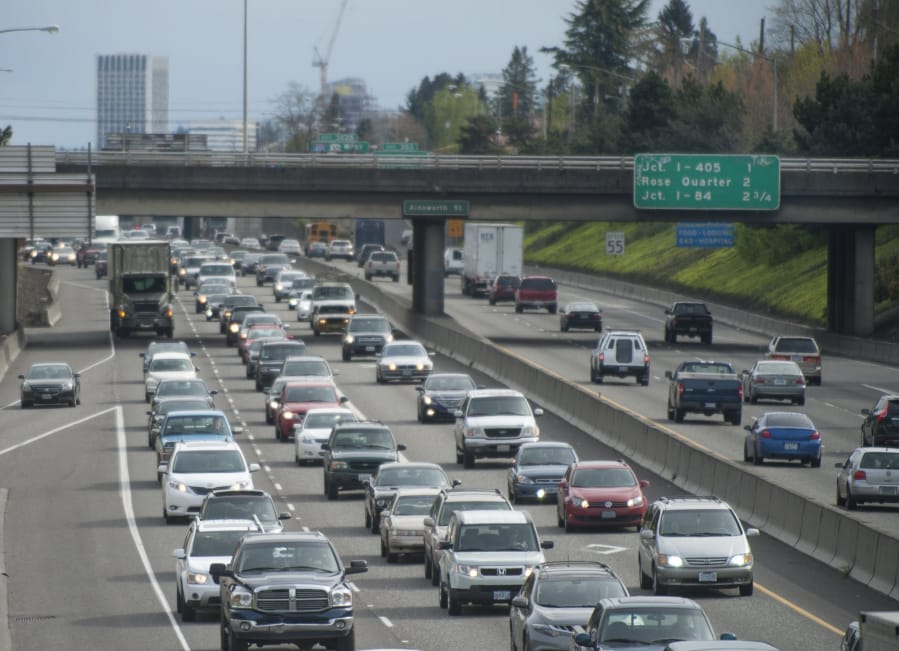Tolling at the Washington-Oregon state line is tentatively on hold.
The 25-member Value Pricing Policy Advisory Committee held its penultimate meeting Monday to narrow tolling concepts Oregon is considering, as directed by the Oregon Legislature as part of a $5.3 billion transportation plan.
The favorite concept is tolling all lanes on Interstate 5 between Multnomah Boulevard and North Going Street. But that doesn’t mean tolling all lanes on I-5 and Interstate 205 from south of Marine Drive to the merging point of both freeways is off the table.
“‘Not yet’ is the phrase I would use,” said David Ungemah, WSP’s managed lanes and roadways service area manager. WSP is the contracted engineering firm consulting with the committee.
The committee evaluated five concepts, A through E, but appears to be leaning toward Concept B, the plan recommended by WSP that would use tolling on just I-5 as a pilot project. If the project is successful, the consultants say Oregon could then consider Concept C, expanding tolling to all lanes of I-5 and I-205.
Concept C would provide the most congestion relief. But it’s also complex to implement, said Chris Swensen, southeast director for toll systems and managed lanes for WSP.
That option would generate approximately $300 million a year with a cost of between 17 cents and 38 cents per mile depending on travel time. The concept also comes with the largest capital expenditure necessary to implement.
Concept B, on the other hand, is relatively easy to implement and would generate enough revenue to cover toll operating costs as well as routine roadway maintenance, according to WSP’s analysis.
Annual revenue for Concept B is much lower than Concept C, however. Toll rates would likely be set between 10 cents per mile and 26 cents per mile depending on the time of day and generate $50 million a year. The length of freeway is about eight miles, meaning the cost to travel the stretch would be between 80 cents and $2.08 each way.
Concept B should reduce congestion on I-5 with minimal diversion of traffic to I-205, according to the analysis. During morning peak times, the chance of hyper-congestion traveling northbound reduces from 38 percent to 30 percent. Traveling southbound the reduction is from 38 percent to 32 percent. During the evening commute, the chance of northbound congestion reduces from 35 percent to 28 percent and from 34 percent traveling southbound to 30 percent.
Ungemah said this is the “best opportunity.”
“I think no matter what we do, we’re not going to have enough money or enough resources to pay our way out of congestion,” said Sean O’Hollaren, one of the committee’s co-chairs and a member of the Oregon Transportation Commission.
The good news for Southwest Washington residents is Concept A, which would toll the north portion of I-5, is not recommended at all.
“I’m pleased that Concept A was not recommended as it would implement a toll that disproportionately impacts Southwest Washington residents and commuters without providing commensurate benefits,” said Vancouver Mayor Anne McEnerny-Ogle, who is one of three Washington representatives on the committee. “There were limited congestion-relief benefits. The tolls would probably cover the operations of tolling but not the costs for the capital investments needed for mitigation.”
The committee has its final meeting June 25, where it will make a formal recommendation to the Oregon Transportation Commission for consideration. McEnerny-Ogle added that as any future analysis occurs, I-5 Bridge replacement and mitigation for the entire regional system should be considered.




